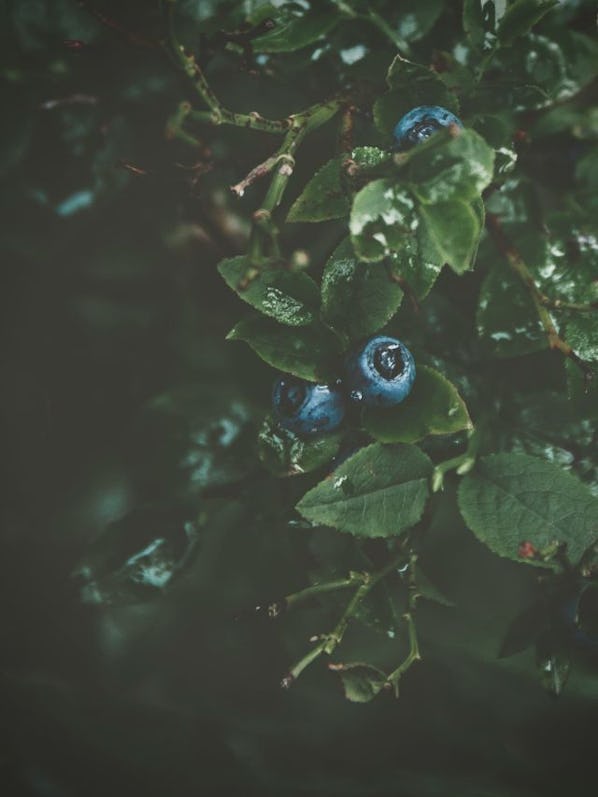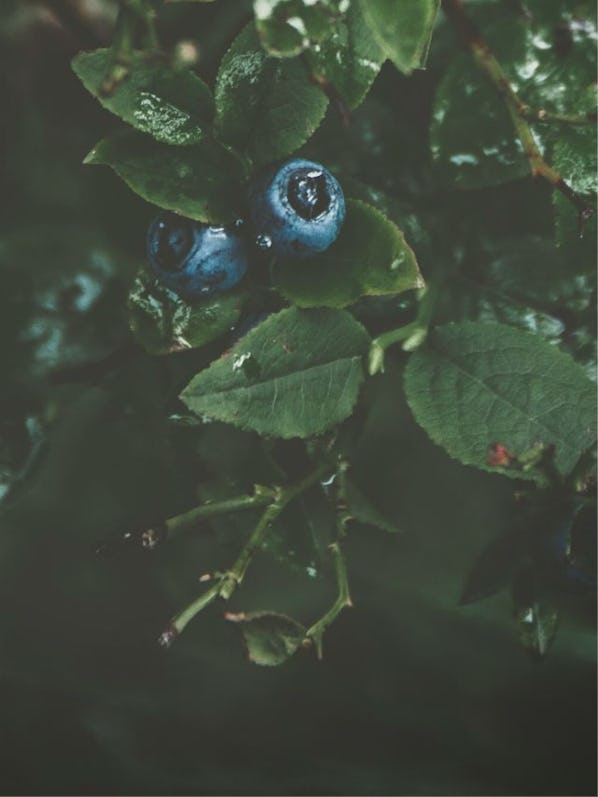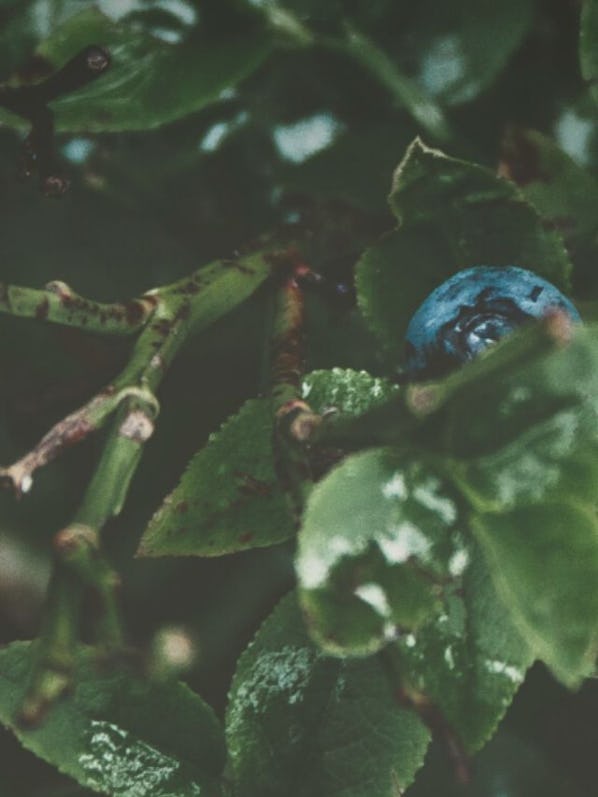
What's In Our Essential Eye Vitamins

Dry Eyes - Lasting Relief

Menopause - Sore, Red, Itchy Eyes
Our Eye Vitamins contain Maqui berry - a native berry that grows in the wild forests of Patagonia in Chile and Argentina (often referred to as a 'super fruit'). This berry has been consumed since ancient times by indigenous people. It is naturally extraordinarily rich in nutrients and powerful flavonoid species known as anthocyanins.
Maqui berry is hugely beneficial for treating dry eyes. The berry contains high levels of anthocyanins and polyphenols, powerful antioxidants that can help reduce inflammation and increase tear production. Additionally, maqui berry contains omega-3 fatty acids, which are beneficial in restoring the tear film and reducing inflammation in the eyes.

Redness, stinging and itchy eyes. Sensitivity to light and blurred vision. Also, foreign body sensations - when you feel something in your eyes.
Measure your Tear Break-Up Time with our simple 15-Second Blink Test. Measuring Tear film break-up time (TBUT) determines the stability of the tear film and checks whether you may have (evaporative) dry eyes.
The older you are (typically over 55), the more likely you are to produce less tears. We also see a higher incidence of this in women than men (especially those going through perimenopause and menopause). Other contributing factors include the intensive use of digital screens, constant and long periods of wearing contact lenses. Environmental factors such as cigarette smoke, air conditioning and pollution. Certain medications and laser surgery can also increase.
Studies showed an increase of 89 % in tear fluid production after 4 weeks. A Dry Eye-Related Quality-of-Life Score questionnaire (DEQS) demonstrates that participants (N=74) using our Maqui berry extract reported a significant reduction (57%, to be precise) in bothersome eye-related discomfort after 4 weeks of use.
Maqui berries have a higher concentration of beneficial compounds, including anthocyanins, polyphenols, and omega oils, making them a better option for treating dry eyes than bilberries.
Polyphenols are powerful antioxidants that neutralise free radicals. Anthocyanins reduce inflammation, improve circulation, and support healthy eyesight. At the same time, omega oils help healthy cell membranes and reduce inflammation throughout the body.
Maqui berries contain approximately 1387 mg of anthocyanins per 100 grams, making them one of the richest sources of these potent antioxidants. In comparison, bilberries contain around 300-700 mg of anthocyanins per 100 grams.

Maqui berries contain a higher concentration of omega oils than bilberries.Omega oils are essential fatty acids critical for overall health and well-being. They support healthy cell membranes, improve brain function, and reduce inflammation.
Maqui berries also contain a unique compound called delphinidin that may benefit your eye health. In published studies, researchers found that delphinidin improved the function of cells lining the blood vessels in the eyes, reducing inflammation and improving circulation. This may benefit eye diseases such as macular degeneration and cataracts, which are associated with inflammation and poor eye circulation.

Maqui berry (Aristotelia chilensis) is a small, deep purple fruit native to the Patagonian region of South America. This berry has long been consumed by indigenous peoples for its nutritional value and medicinal properties. Rich in antioxidants, especially anthocyanins, maqui berry has been associated with a wide range of health benefits, including supporting eye health.
Anthocyanins are known for their anti-inflammatory and antioxidant properties, which can protect the eyes against oxidative stress, inflammation, and damage caused by blue light exposure.
The high anthocyanin content in maqui berries helps improve vision by protecting the retina from oxidative stress, reducing inflammation, and supporting blood circulation in the eye. Moreover, these powerful antioxidants promote the regeneration of rhodopsin, a light-sensitive pigment in the retina that plays a critical role in low-light vision. As a result, maqui berry may contribute to better eye health and vision by shielding the eye from harmful environmental factors and promoting overall eye function.
Several studies have investigated the potential benefits of maqui berry for eye health. A study published in Molecular Vision (2012) found that the anthocyanin-rich extract from maqui berries protected retinal cells against oxidative stress in vitro. Another study published in the Journal of the Science of Food and Agriculture (2014) reported that maqui berry extract improved tear production in animal models, suggesting potential benefits for dry eye syndrome.
Additionally, studies showed an increase of 89% in tear fluid production after 4 weeks. A Dry Eye-Related Quality-of-Life Score questionnaire (DEQS) could demonstrate that participants (N=74) using our Maqui berry extract reported a significant reduction (57%, to be precise) in bothersome eye-related discomfort after 4 weeks of use.
Some evidence suggests that the antioxidants found in maqui berry may help reduce the risk of age-related eye diseases such as cataracts and age-related macular degeneration (AMD) by protecting the eyes from oxidative stress and inflammation.
Maqui berry is generally considered safe for most people when consumed in moderation as part of a balanced diet or as a dietary supplement. In very rare cases, you may experience mild side effects, such as digestive discomfort or allergic reactions.
The high content of anthocyanins and other antioxidants in maqui berries helps neutralise harmful free radicals, reducing oxidative stress and inflammation in the eyes. This protection may help prevent or slow the progression of various eye diseases and conditions caused by oxidative damage, such as cataracts, AMD, and diabetic retinopathy.
Additionally, studies showed an increase of 89 % in tear fluid production after 4 weeks. A Dry Eye-Related Quality-of-Life Score questionnaire (DEQS) could demonstrate that participants (N=74) using our Maqui berry extract reported a significant reduction (57%, to be precise) in bothersome eye-related discomfort after 4 weeks of use.
As mentioned earlier, a studies have reported that maqui berry extract improved tear production, suggesting potential benefits for dry eye syndrome (Dry Eyes) and Computer Vision Syndrome (CVS).
Although the antioxidants in maqui berries may support overall eye health, there is limited evidence directly linking maqui berries to improved night vision or visual acuity. Further research is necessary to explore these specific aspects of eye health in relation to maqui berry consumption.
About 2 to 4 weeks.
In general, maqui berry can be taken alongside other eye health supplements, such as lutein and zeaxanthin. These nutrients support eye health by protecting the eyes from oxidative stress, inflammation, and potentially help protect against harmful blue light exposure.
Anthocyanins are natural pigments that give fruits and vegetables their deep red, purple, and blue colours. These pigments have been shown to have various health benefits, including reducing inflammation, improving circulation, and supporting healthy eyesight. Both bilberries and maqui berries are rich in anthocyanins, but maqui berries contain significantly more of these beneficial compounds.
Maqui berries & bilberries are both excellent sources of anthocyanins, but maqui berries stand out for their significantly higher content of these beneficial compounds. While bilberries contain approximately 300-700 mg of anthocyanins per 100 grams, maqui berries can have as much as 1387 mg of anthocyanins per 100 grams. This higher anthocyanin concentration in maqui berries makes them a particularly attractive option if you're looking for natural ways to support your eye health and overall well-being.

